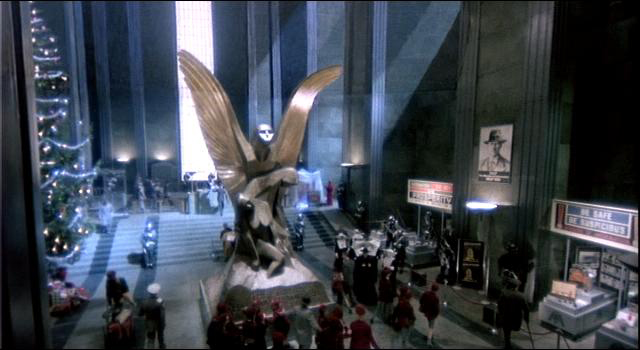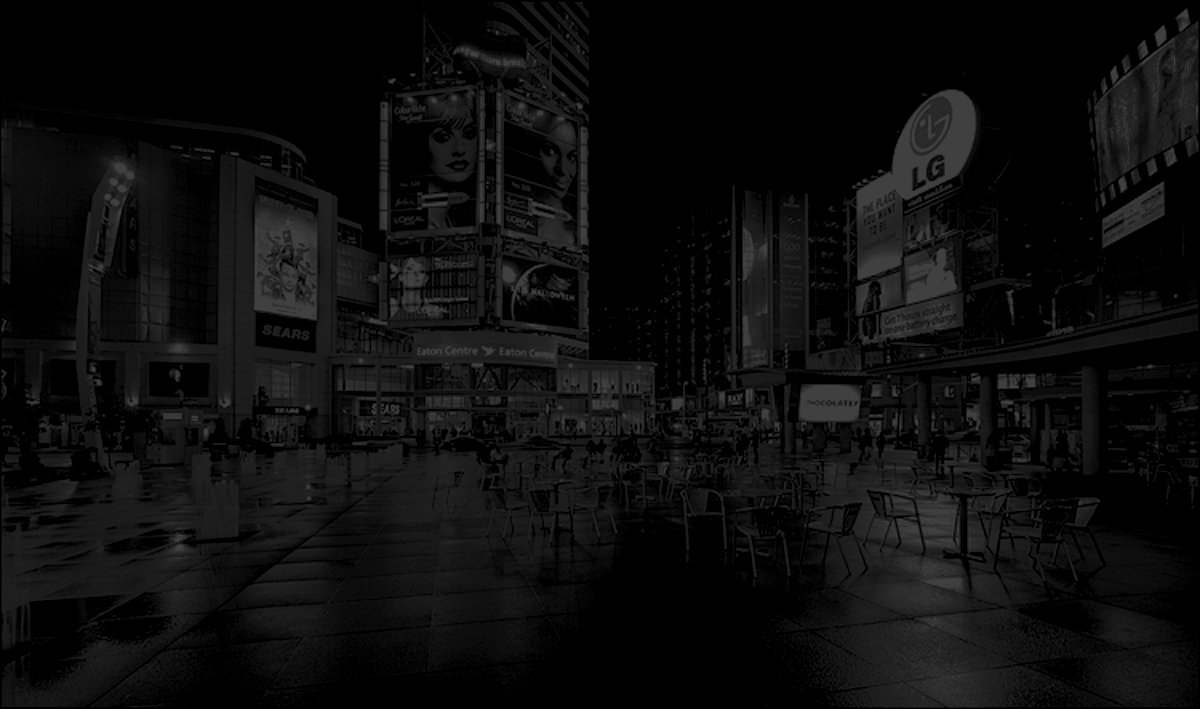

Terry Gilliam’s epic film Brazil presents an urban future dominated by an overbearing and hopelessly inefficient state that controls all aspects of urban life. In contrast to Batman and Renaissance, the city is not given a particular character or place, but is rather a depiction of some unidentified technological urban future. Within the urban space of the city there appear to be no large public areas – rather, the public realm seems to extend into the lobbies and atria of the government organizations like the Ministry of Information Retrieval. This creates a city reminiscent of the map of Rome created by Giambattista Nolli in 1748, where the sanctuaries of churches and interiors of civic buildings were rendered as public urban space. In this instance, however, the interiority of urban space is a tactic to ensure the government is wholly in control of these spaces and the activities that go on within them. It is a form of military architecture. The thinking might go that if there is nowhere to gather, no one will gather and thus challenge the authority of the state. The terrorist bombings are perhaps a reaction to this control, and the despotic message the lack of urban space conveys. Within the urban lobby of the Ministry, a large statue of an eagle keeps a watchful eye over the space, along with the message: The Truth Will Set You Free. In other scene, propaganda reads: Mind that Parcel. Eagle Eyes Can Save a Life. Thus the symbols found within these urban spaces echo the propaganda prevalent in every aspect of society, which is literally plastered with signs, billboards, and messages conveying the state’s messages, examples of which are:
The few glimpses we do get of urban space in the film contain a mixed message as to the historic references being made, which makes the image of the city all the more ambiguous. Within several scenes, there are very clear suggestions of classical architecture replete with pediments and orders, built right into the bland fabric of the city as if it was a shrine. Housed within it are what look like small advertisements, or perhaps posters of government propaganda. Also referencing classical architecture are the grandiose steps at the entrance to government institutions. However their occupation is restricted and no one can use them as they were used in ancient civilization for lounging and engaging fellow citizens.
In a similar fashion to Batman, the film tries to imbue the futuristic city and its urban spaces with a sense of normalcy so that we might relate to it more readily as a place and read it clearly as a critique of our own society. In Brazil the holiday season is upon the city, and signs and symbols of Christmas are everywhere. While so much of society is seen to be empty and passive to the control of the state, the festive season still brings people out to shop and spend, even listen to bands in the street. It is possible Gilliam is making a comment on the nature of our own consumerist societies in which we adhere to holidays less for their religious or cultural significance, and more for their commercial qualities. The lack of cultural iconography is similar to our own urban depiction of Christmas, and it is this hollowness that resonates both with the society in Brazil and our own consumerist culture, forcing us to question both.